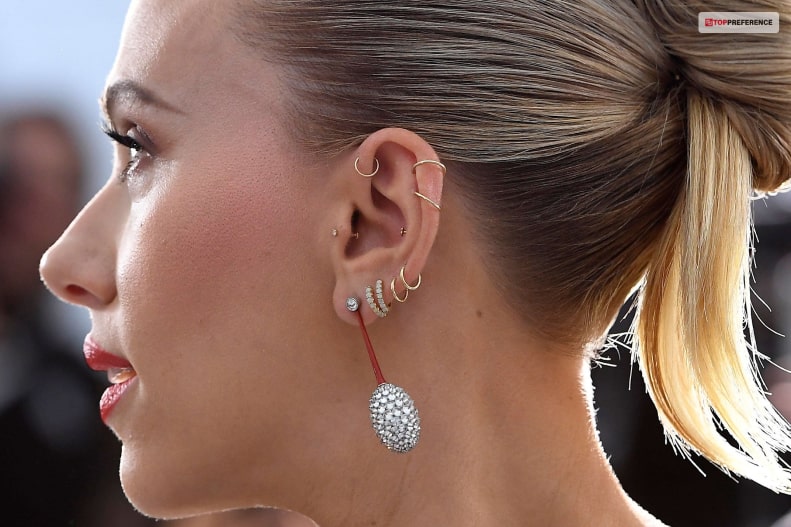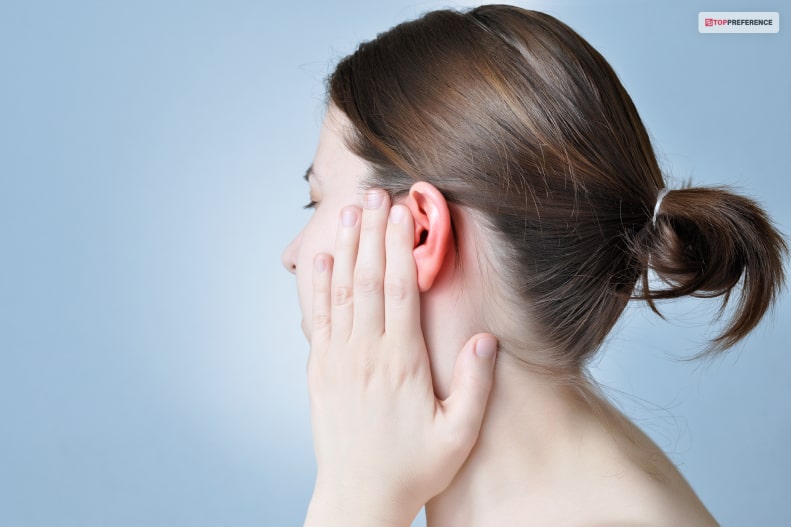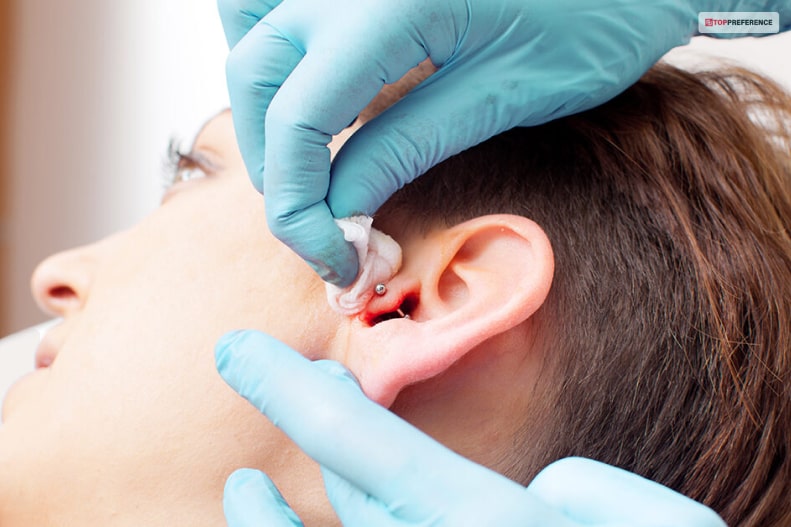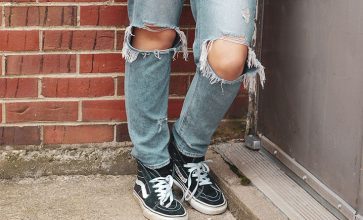What Is Cartilage Piercing? A Brief Guide In 2023
When it comes to piercing, ear piercing is the most common. Many people don’t know that there are varieties of ear piercings, and a person can almost pierce anywhere in their ear. For example, there is a woman who has 26 piercings on each ear.
What Is Cartilage Ear Piercing?

In simple words, a cartilage piercing is an ornamental hole in a cartilage area of your body. For example, you know there are stiff areas in your nose and ears, so any piercing in those stiff areas is cartilage piercing. The main difference between a cartilage piercing and other areas of piercing is cartilage areas take a longer time to heal. The healing process depends on and varies on many things.
But on average, it will take around four to twelve months to heal the area properly. So if you pierce your eyebrows or earlobes, those take a short time. But cartilage piercing takes a long time because, in this case, the human body needs to work hard to fill up not only the soft tissues but also the cartilage.
The healing process starts from the inside. So if you see after a couple of months that the area is still not healed properly, it will take a long time. Then this is not the case, the area will be healed soon. If you are thinking of getting yourself one, here is everything you should know before piercing any cartilage area of your body.
So, how long does it take a cartilage piercing to heal? There are different factors behind this, but mostly it takes around three to four months to recover the area fully.
Different Types Of Cartilage Piercing
Simply put, a piercing in a cartilage area or where the tissues are more rigid is a cartilage piercing. But there are different types of this piercing. Here, I will mention the popular ones.
1. Helix

This piercing style is the most popular one, and most people do this without knowing what they are doing. Some people call it the standard piercing. It is located in the outer and upper rim of your ear.
2. Rook

This type of piercing is done in the upper area of the ear, it is also known as the antihelix. A rook piercing takes place in the helix of the ear or, simply put, the fold right beneath the rim.
3. Tragus

The piercing is done in the front area of the ear canal, where there is a small piece of cartilage.
4. Earhead

The piercing takes place above the tragus or in the outer rim of the ear. This kind of piercing is also called the forward helix.
5. Daith

This type of piercing is done in the inner cartilage area, or you can say in the inner ear. There are some studies that show that a Daith piercing can help a person to alleviate migraine pain and ease anxiety.
Conch

When it comes to conch piercing, there are two types of that inner conch piercing and outer conch piercing. The inner piercing is done in the middle ear, and the outer piercing is done in the outer part of the ear?s cartilage.
The outer piercing is also called an orbital piercing. And you should also know that a conch piercing needs two piercings that will be connected to a single piece of jewelry, so you will need a friend to help you. You can say that this is a double cartilage piercing.
Health Issues

If you are thinking of getting your cartilage pierced, then there might be a couple of things that can come between you and good health. So, it is clear that a piercing is basically a wound, and a wound has to be treated with care; otherwise, you may face complications.
After the piercing is done, the area will be sore to touch for a couple of days. Sometimes the area may itch also. There will be a yellow or white fluid coming from the area, and sometimes you may see bruising and bleeding also, but all of these are normal. With time, these things will go away.
If a piercing is not well done, then there will be an infection. Sometimes, you can see green, yellow or gray fluid coming from the area. And with time, the infection will spread, and the area will become pinkish and reddish. If you face nausea, chills, or fever, then visit a doctor.
There is a common issue that most people face after a cartilage piercing, this is called the Keloid scar. So what is a keloid scar? After the piercing, the area raises a scar that looks like a bump on the piercing cartilage. Sometimes the issue is caused by infection, and sometimes, there can be a keloid scar anyway. The scar is not dangerous, but people do not like a bump around the hole.
How To Heal It Fast?

After the person gets pierced, it is your duty to take care of the area. Here are some basic things that you can follow.
1. Cleaning
The first thing you need to do is to clean the area. You should clean the area twice a day for a minimum. You should use antiseptic and warm water. If you are going out, then you should definitely wash the area after coming back to your house.
2. Saline Soak
You can make saline water by simply putting salt into a hot cup of water. Try to soak the area in the water several times a day. Not only will the area be disinfected, but the healing process will be faster.
3. Keep Your Hands Away
Most people touch the jewelry and the pierced area a lot of times. Try to avoid that. As our hands are unwashed most of the time, you should keep your hands away. An infected cartilage piercing is too dangerous.
Frequently Asked Questions (FAQs):-
Here are some interesting questions and questions.
Ans: The cartilage is thicker than other soft tissues. So, there will be more resistance, and this is the reason a cartilage piercing is more painful than a normal piercing in the lobe area.
Ans: This piercing is done on the harder part. As I already said that the area takes a longer time to heal so the area can be infected easily. Until the pierced area is fully healed, a single bacteria can get infected.
Ans: When it comes to cartilage piercing, gun piercing is done within seconds, so it is less painful. But I would suggest that you do not gun pierce your cartilage area, the force can shatter your cartilage.
To Conclude
So that you are aware of everything about cartilage piercing, it is time to choose the right piercing that you should do. There are different styles and materials the piercing jewelry. Also, you should do proper research before selecting the right jewelry for your ear.
If you have anything to ask, feel free to let us know in the comment section below.
Read Also:






















